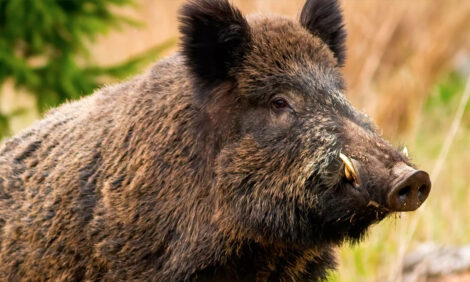



How is Danish Pig Sector Improving Welfare?
DENMARK - The Danish pig industry is to raise welfare practices and regulations on the farm over those being demanded by the European Union.The International Pig Seminar at Agromek in Herning heard that while the EU regulations allow the use of traditional sow stalls for four weeks after service, the Danish pig sector is to demand that all sows must be loose in the service area in newly built facilities after 1 January next year.
And all facilities will have to fall into line by 2035.
Dry sows may be housed in pens for up to three days.
In Denmark, the gestation unit must also have free access and there must also be straw on the solid or drained floor.
The Danish system also requires a sprinkling system – a practice that is not spelt out in the EU regulations.
“By using these systems you have to take out 10 per cent of the sows out of the system and have to have five to 10 per cent more hospital pens,” said Asger Kjaer Nielsen, the quality manager at the Danish Pig Research Centre.
In the farrowing area, the Danish production system also demands a covered creep area for the piglets and a solid floor.
The covered creep area allows for a warmer area for the piglets and allows a cooler area for the sow.
“This can also save money on electricity,” Mr Nielsen said.
The Danish pig production sector is also aiming to have 10 per cent loose-housed lactating sows by 2020 and loose-housed sow systems in all in all newly built units by 2021.
Mr Nielsen said that while the pens help to prevent the sow crushing the piglets in the first three to five days in a sow welfare and piglet protection system, the Danish sector is experimenting with loose lactating sows and free farrowing.
Mr Nielsen said that the Danish pig production regulations exceed the EU legislation in areas covering procedures for tail docking, castration and tooth grinding, the provision of sprinkler systems the flooring requirements, the type of rooting materials supplied the specifications for the hospital pens, th provision of creep areas for piglets and also the inspection system.
“In Denmark, we are ahead in many welfare issues, when compared to other EU countries,” Mr Nielsen said.
However, earlier this year the new agriculture minister in Denmark, Dan Jorgensen, (pictured above) called a welfare summit that laid down a series of objectives to improve animal welfare in pig production.
The highlights of the objectives include:
- greater survival rates among piglets
- all sows to be group-housed in the long term
- a ban on castration of piglets and
- a reduction in the number of tail-docked piglets.
Mr Nielsen said that the industry is working towards raising the survival rate of piglets by one per litter by 2020.
The industry is also aiming to have at least 10 per cent of the nursing sows loose in the farrowing pens by 2020.
Another aim is to end castration without anaesthetic by 2018. However, Mr Nielsen said that consumer demands and the ability to control boar taint in the meat mean that at present it is difficult to abolish castration of piglets altogether.
The move on tail docking is to significantly reduce the practice.
The industry is also committed in the summit declaration to reducing stomach ulcers in sows and finishers through better health control.
The sector is also to focus on housing construction with welfare aspects in mind and the retail sector is working with the industry to provide consumers with more information about products produced to higher welfare standards.








